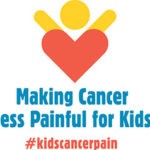 Pain is one of the most distressing symptoms children living with cancer experience. It can be caused by the disease, procedures and side effects of medication. Pain can be pervasive and impact every part of a child with cancer’s life. Managing this pain has been shown to have a profound impact on a child’s health and recovery. Research has found strategies and medications that parents/caregivers can use to help do this for children with cancer. But …
Pain is one of the most distressing symptoms children living with cancer experience. It can be caused by the disease, procedures and side effects of medication. Pain can be pervasive and impact every part of a child with cancer’s life. Managing this pain has been shown to have a profound impact on a child’s health and recovery. Research has found strategies and medications that parents/caregivers can use to help do this for children with cancer. But …
Did you know that it takes, on average, 17 years for research to be translated into practice?
It doesn’t have to be that way! Healthcare professionals have the ability to empower parents/caregivers to help with the management their child’s cancer-related pain.
Over the past year, I have helped develop the digital communication strategy for a project based out of the IWK Health Centre and SickKids Hospital that worked to make cancer less painful for kids by getting information about kids’ cancer pain into the hands of those who can use it most: parents and caregivers of children with cancer. The #KidsCancerPain team, led by Dr. Christine Chambers (IWK Health Centre) and Dr. Jen Stinson (SickKids Hospital), in partnership with the Cancer Knowledge Network, worked together to close this knowledge to action gap by bringing the best science on children’s cancer pain directly to parents and caregivers over social media through blog posts, short videos, twitter chats, social media images and more. The project, funded by a research grant from the Canadian Cancer Society, involved patient advocates, clinicians, a panel of cancer-experienced parents and researchers, including Dalhousie University PhD trainee Perri Tutelman and Research Associate, Dr. Jennifer Parker.
The goal of the campaign was to increase parent/caregiver awareness and use of strategies, that we know from research, help to control children’s cancer-related pain. From the social media campaign, which was based on cutting-edge research evidence, here are the 5 top tips that parents/caregivers can use to help make cancer less painful for kids:
- Needle-based procedures can be unpleasant, scary and painful. Anesthetic patches and creams like EMLA™, Maxilene™ and Ametop™ can help! In order to be effective, these products have to be applied 30-60 minutes before the painful procedure. Parents/caregivers can purchase these over-the-counter at most pharmacies. More tips for needle-based procedures can be found in this blog: https://cancerkn.com/tips-manage-childs-needle-pain/
- Acting calm helps kids be calm. How a parent or caregiver behaves during a procedure can influence the child’s level of distress. When parents feel confident in helping their child stay calm during painful procedures, children are less anxious. http://itdoesnthavetohurt.ca/wp-content/uploads/2017/11/KCP-SMI_ActingCalm_FINAL.jpg
- When you know how much pain the child has, you are better able to help. Pain assessment tools make it easier. Depending on the child’s age and verbal abilities, there are different tools and scales that can be used. There are additionally three ways that can help determine if a child is in pain, in order of reliability:
- What the child says (verbal)
- How the child behaves (changes in movement, sleeping, eating)
- How the child’s body responds (heart rate, breathing, sweating)
To read more these tools and scales, read this blog post: https://cancerkn.com/tools-help-assess-childs-cancer-pain/)
- Take medications as directed by the medical team. Medication is at the heart of good pain management. Taking medications as directed will help the child have the best possible quality of life. Also, combining medication with other pain management strategies makes cancer related pain better. To hear more, watch this video: https://www.youtube.com/watch?v=wxo_07RLVQU
- Distraction is one of the easiest and most inexpensive ways to reduce needle pain during procedures. For infants and young children this might involve reading stories or singing their favourite song. Older children and adolescents may be interested in watching a movie on a tablet or listening to music with headphones. Allowing the child to choose their distraction activity can help. More on distraction can be found in this blog: https://cancerkn.com/tips-manage-childs-needle-pain/
Have parents/caregivers of patients who may be interested in learning more about evidence-based ways to manage their child’s cancer pain? People can continue to follow information from the social media campaign through Facebook, Twitter and YouTube by searching the hashtag: #KidsCancerPain. Disseminating credible evidence-based information through social media – a space where parents/caregivers are already living and connecting with each other – helps to bridge this 17-year research to practice gap and improve the lives of children living with cancer.
To read about these tips and more, visit: http://itdoesnthavetohurt.ca/campaigns/kids-cancer-pain/. For additional information on Dr. Chambers’ research, please visit: itdoesnthavetohurt.ca